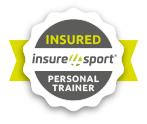Master the Basics - Cardio

Cardio is arguably the most misunderstood topic within the fitness industry.
The misinformation about cardio is often due to the fact it is talked about as a ‘fat-burning’ method. To be completely clear, cardiovascular training is not ‘fat-burning’ training. Yes, cardio utilises energy, but guess what, everything you do utilises energy. So with that in mind, let’s get into what cardio is all about, some key considerations and how best to utilise this in your workouts.
The name ‘cardio’ as in cardiovascular or cardiorespiratory is a clear indication as to what this type of training is all about. When you do it you are training the heart and lungs to be more efficient at transporting and utilising oxygen and energy. When you think of cardio you need to start thinking about which energy systems you are using and therefore what adaptations you will get.
The three main energy systems are:
- Aerobic system
- Glycolysis (anaerobic) system
- The Phosphagen system
You will probably better know these as heart rate training zones:
- Zone 1 – 50-60% of Heart Rate Max – is your everyday living, walking around.
- Zone 2 – 60-70% of Heart Rate Max – think of it as going for a jog or cycle while still holding a conversation. The benefits of Zone 2 are higher cardiac output and lower resting heart rate, an increase in the ability to sustain a higher percentage of your aerobic capacity without building lactic acid and help to bring your body into a more parasympathetic environment to allow you to rest and recover.
- Zone 3 – 70-80% of Heart Rate Max – think of this as going for a run or cycle at a pace you can sustain but can only give 1-2 word answers. This zone gets labelled the “grey zone” as it’s too hard for the benefits above but not hard enough for the benefits below. However, training in this zone will make you able to work at a higher capacity in your Zone 2 training.
- Zone 4 – 80-90% of Heart Rate Max – this is your lactic threshold zone, this form of training will bring you to the point that you start to feel your muscles burn with lactic acid This type of training is more typically shorter depending on your threshold. Benefits include the ability to tolerate lactic acid, help to boost your anaerobic capacity and can help to build mitochondria density which are the cells that create energy.
- Zone 5 – 90-100% of Heart Rate Max – this is an all-out effort for around 10 probably no more than 20 seconds. You are above the lactic threshold, this pace you physically can’t sustain for any length of time. Benefits include: building up mitochondria in your fast-twitch muscles, buffering lactate acidosis, as well as enabling you to re-synthesize lactic acid.
The duration of time you train directly influences the intensity in which you can train and therefore the subsequent energy system.
A really good idea with cardio is to build a base in the lower intensities and when you have good levels of aerobic capacity you can start to maximise the above energy system. Then, emphasizing different energy systems across your overall training helps divide your training stress.
Finally, a note on fasted cardio for fat oxidation. Fat oxidation sounds great, in this sense you are using more fat as a fuel but the effects are minimal and if you don’t enjoy training fast then it’s not worth the hassle. EPOC gets championed as a reason to do higher intensities because when you train at higher intensities and switch to glycogen (stored sugar) as a fuel source you create oxygen debt which you have to recover from. Post-training you will be using more energy because of this, and as much as this is true, the effects are tiny and hardly worth thinking about.
Stay tuned next week for another instalment of Master the Basics and don’t forget to follow me on Instagram where I share exercise techniques, and show you how to maximise your training. I hope you enjoyed this blog post, if you have any questions I host a weekly Sunday Q&A session on my Instagram channel. Otherwise, please feel free to email me at andy@andyvincentpt.com.
If you want to get in touch and see how I can help your fitness and become your Online Personal Trainer, click here.


